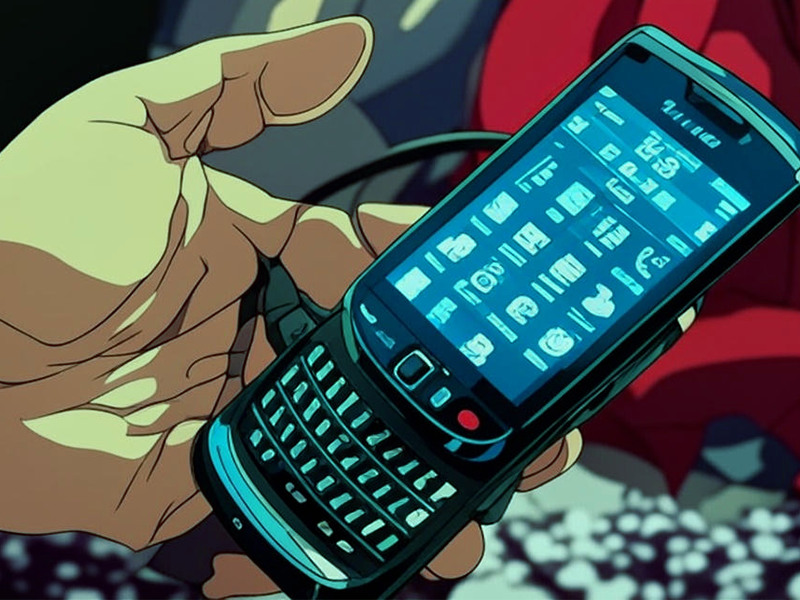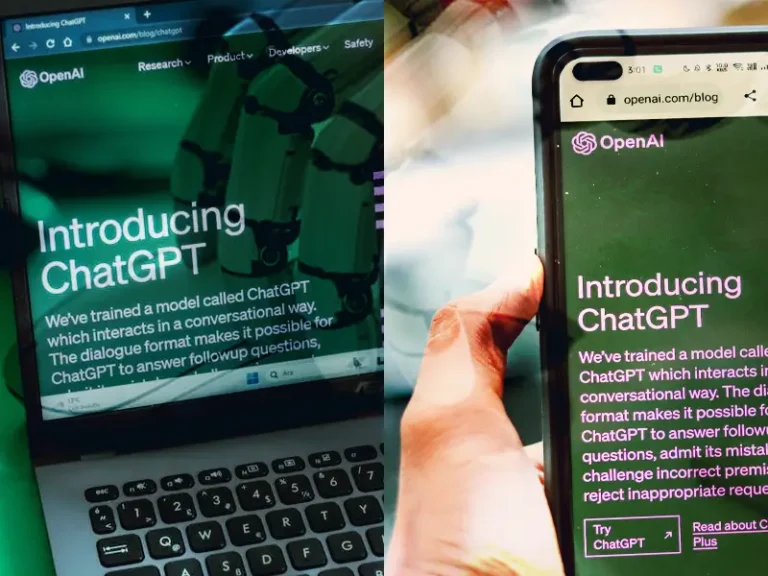The origin story of BlackBerry is just as fascinating as its fall. It began with two friends. Then came a strategic third partner. Together, they nearly conquered the world.
Symbol of Elegance
There was a time when BlackBerry held 20% of the global mobile market—and nearly half of the U.S. market. In the world of mobile phones, BlackBerry wasn’t just dominant—it was untouchable.
It wasn’t a slow climb to the top, either. For BlackBerry, it was more like: I came, I saw, I conquered.
From 1999 to 2010, BlackBerry ruled for 11 straight years. And during that reign, it became more than just a phone—it became a status symbol.
If you had a BlackBerry in your hand, you weren’t just important—you looked important. Barack Obama had one. So did Madonna. Lady Gaga too. BlackBerry was the tech badge of the elite.
The business world was no different. From CEOs to senior officials, the BlackBerry was the device of corporate culture.
But then—almost overnight—it was gone. The collapse was so swift it stunned the industry. Once a titan, BlackBerry faded into oblivion.
Yet the origin story of BlackBerry is just as fascinating as its fall. It began with two friends. Then came a strategic third partner. Together, they nearly conquered the world.
Two Friends in a Small Canadian Town
In the 1980s, in Waterloo, Canada, a company called Research In Motion (RIM) quietly emerged. Behind it were two longtime friends: Mike Lazaridis and Douglas Fregin.
Mike was born in Turkey but moved to Canada with his parents as a child. From early on, he was obsessed with electronics. He’d spend hours fixing broken gadgets—sometimes even helping his school teachers with their repairs.
Douglas was more private, almost mysterious. But like Mike, he loved tech. The two became fast friends, often spotted buried in some experiment.
Eventually, they launched their own company. Their mission: build world-class devices. With a small office and a team of equally work-obsessed engineers, they began creating niche tools.
Their early inventions included a device that allowed users to type messages and display them on a TV—impressive in the 1980s. For the next five years, they built custom tech for local businesses. But while the work was clever, the money wasn’t. Often, they struggled to pay the bills.
Then came a turning point.
The Mobitex Moment
Enter Ted Rogers, CEO of Rogers Cantel Inc. His company had been experimenting with a type of radio network called Mobitex, trying to send digital messages over it—but with no success. So they came to RIM for help.
Mike and Douglas began digging into Mobitex and stumbled onto something big. At the time, wireless phones, pagers, and texting were common—but no one had cracked the code for wireless email.
That’s when it clicked. Mobitex could be the solution.
While others were approaching it wrong, Mike and Douglas found the right way. They solved the problem for Rogers—and began dreaming of something bigger. A device that could do the impossible: send and receive email from the palm of your hand.
They just needed one thing.
Money.
The Missing Piece: Jim Balsillie
With an early prototype idea in hand, the two friends started knocking on corporate doors. That’s when they met Jim Balsillie.
Jim was sharp, disciplined, and relentless. Not the most brilliant student growing up, but one of the hardest-working. He mapped out his career like a military operation—earning an MBA from Harvard and landing a job at Sutherland-Schultz.
But just as RIM was struggling, so was Jim. His company was merging, and he wasn’t happy. They offered him a severance. Around that time, Mike and Douglas pitched him their vision: a phone that could do more than call or text—it could email.
The pitch was terrible. Mike and Douglas were brilliant, but painfully shy. Their presentation lacked flair. Jim wasn’t impressed. Yet something about the idea stuck with him.
Soon after, Jim contacted them. He proposed a deal: he’d invest in the project—but in return, he wanted to be a full partner.
At first, Mike and Douglas hesitated. But they knew the truth. They could build the product—but without someone like Jim, they couldn’t sell it. Jim had what they didn’t: business instinct and ruthless execution.
They agreed.
The deal was this: Mike would hold 40%, Jim 33%, and the rest went to Douglas and others.
It worked.
Mike and Douglas focused on innovation. Jim led sales and marketing. It was the perfect balance. With Jim on board, RIM found its missing puzzle piece—and with that, BlackBerry was born.
The Reign of BlackBerry
Step by step, the team behind BlackBerry moved toward building their game-changing device. They kept breaking through one obstacle after another. Since their service was built around the Mobitex network, they needed access to it—and that meant striking deals with the companies who owned it.
In Canada, Mobitex was controlled by Rogers Cantel Inc., and in the U.S., by BellSouth. Remarkably, they managed to secure agreements with both.
By this time, they had already developed working prototypes. So once the network deals were in place, it didn’t take long for things to fall into motion.
In 1999, they unveiled their first official product: the BlackBerry 850. It wasn’t exactly a phone. It featured a small black-and-white display, a physical keyboard, and the ability to send and receive emails. It also functioned as a pager.
Though it wasn’t flashy in terms of design, professionals started picking it up for one simple reason—it got work done.
Meanwhile, Mike, Douglas, and Balsillie weren’t slowing down. They were sprinting forward, launching new models in quick succession. In 2000, they introduced the BlackBerry 950, a more advanced version with a built-in web browser. A year later came the BlackBerry 957.
But in 2002, they changed the game.
They finally made a real phone—the BlackBerry 5810. It combined email, web browsing, and full cellular network support. It even had a color screen. It was the moment BlackBerry stopped being a promising startup and started setting the global market on fire.
From there, they released one hit model after another. Celebrities, CEOs, politicians—everyone wanted a BlackBerry. Much of that meteoric rise was thanks to one man: Jim Balsillie. He was the architect behind the sales strategy that made BlackBerry a cultural phenomenon.
The Sales Strategy That Changed Everythin
From day one, Balsillie took an unorthodox approach to selling.
He instructed his team to attend high-profile business conferences—not just to talk, but to observe. If they saw someone working on a laptop, they’d approach quietly and offer them a BlackBerry. Not for sale, but free—for a full month.
No strings attached.
The logic was simple. The device was so new, so unfamiliar, that people couldn’t appreciate its power unless they actually used it. Once they did—once they realized they could check email on the go without lugging around a laptop—most people never gave it back.
Very few returned their devices after the trial period. Most bought it on the spot.
But Balsillie didn’t stop there. He targeted corporate leaders directly. His team would send complimentary BlackBerrys to CEOs of major companies. Once those top executives experienced how productive the device made them, they would often place large orders to equip their entire teams.
BlackBerry became a staple of corporate life.
It wasn’t just a device—it was a status symbol. It meant you were important. Efficient. Always reachable.
And one of its most iconic features? The keyboard.
Mike Lazaridis was obsessed with it. It was his personal touch—a tactile, responsive keyboard that let users type emails quickly and comfortably. That keyboard became legendary. It made BlackBerry feel like a serious business tool.
Sales exploded. Market share soared.
But as we now know, those good days wouldn’t last forever.
The Fall of BlackBerry
The fall of BlackBerry began with a single event—the day Steve Jobs walked onto a stage in 2007 and unveiled the iPhone.
With one product launch, he didn’t just introduce a new phone—he rewrote the rules of the entire industry. The iPhone had no physical keyboard. It offered email, internet, and media—all in a sleek, touch-based interface that felt futuristic. It gave users everything BlackBerry offered, but wrapped in elegance and innovation.
And Jobs didn’t hold back. He mocked rival companies—including BlackBerry—right on stage. The crowd laughed. The tech world took notice.
But here’s the twist: many industry leaders didn’t take the iPhone seriously.
Microsoft’s CEO at the time, Steve Ballmer, famously declared that the iPhone had no chance in the market. It was too expensive. Too impractical. No one would buy it.
BlackBerry’s own founders felt the same. Mike Lazaridis was confident that what Jobs promised simply wasn’t possible—not with the networks of 2007. In their view, the iPhone was a flashy toy, not a serious business tool.
And to be fair, Mike had a point—at first.
The first iPhone struggled with network speed. It had its flaws. But Apple did something few others could: they fixed those flaws fast. With each new model, the issues shrank. By the time the iPhone 3G and App Store arrived, users weren’t just buying smartphones—they were buying into an ecosystem.
Meanwhile, BlackBerry began to feel like a relic of a different age.
The Storm That Failed
As the iPhone grew in popularity, especially among younger users and creatives, BlackBerry clung to its corporate identity. It was still the phone for executives, for bankers, for world leaders.
But that identity started to crack.
Desperate to compete, BlackBerry launched the BlackBerry Storm, a touchscreen device with a built-in keyboard under the glass. On paper, it was meant to rival the iPhone.
In reality, it flopped.
The phone lacked an app store. It was clunky. Buggy. Limited. Users complained. Returns skyrocketed. The Storm was supposed to save BlackBerry. Instead, it became a warning sign: they were falling behind.
Then came the knockout blow: Android.
In 2008, Google launched its own mobile operating system and made it free for other manufacturers. Suddenly, companies like Samsung, HTC, and Motorola could build sleek touchscreen phones—iPhone-style—without starting from scratch.
By 2010, the writing was on the wall. BlackBerry’s market share was collapsing. Users were flocking to iPhones and Android phones. Even once-loyal corporate customers began to switch.
Where Is BlackBerry Now?
Today, BlackBerry still exists—but not as the company it once was.
In 2013, RIM officially rebranded itself as BlackBerry, trying to keep the name alive. But the original founders—Mike, Douglas, and Balsillie—had all exited by then. A new leadership team tried to revive the phone business, but by 2016, they gave up.
BlackBerry no longer makes its own phones.
Instead, the brand name is now licensed out. Other manufacturers can make phones and slap the BlackBerry logo on them—but the real BlackBerry has moved on.
The company has shifted into two main areas:
Cybersecurity – offering advanced security services to governments, banks, and large enterprises.
Automotive software – partnering with major car brands like Audi, BMW, and Mercedes-Benz to build secure in-vehicle systems.
So no, BlackBerry isn’t dead. It just changed.
From being the king of mobile to becoming a quiet player behind the scenes, BlackBerry still exists—just not in the palm of your hand.
If this article made you think—bookmark Wiz Fact.
We’re just getting started.
Smart, rebellious ideas are what we do here. Soon, we’ll launch our newsletter too—so these insights can fly straight to your inbox. No fluff. Just facts worth knowing.








